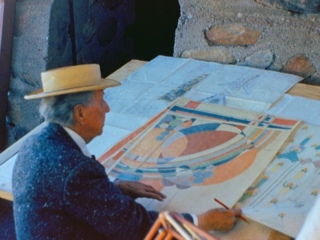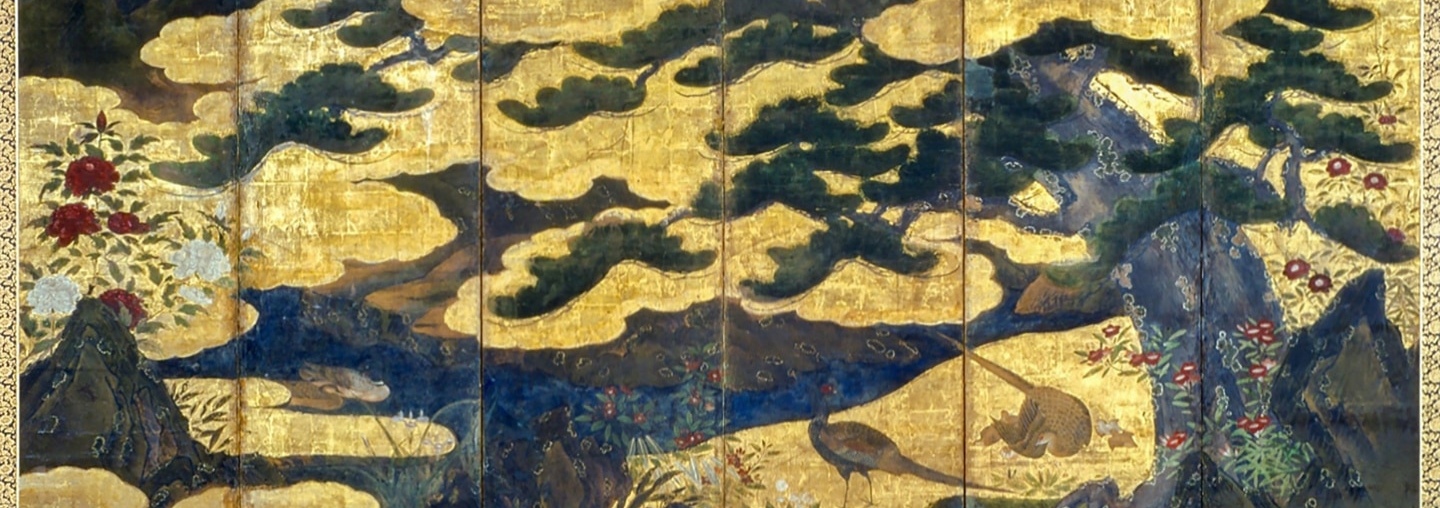
A Complete Work of Art
Margo Stipe | Nov 16, 2018
Frank Lloyd Wright wove together multiple works of art to ensure his Taliesin Estate was an organic, harmonious entity.
“To thus make of a dwelling place a complete work of art. . . lending itself freely and suitably to the individual needs of the dwellers, a harmonious entity, fitting in color, pattern, and nature—this is the modern American opportunity. . . An organic entity. . . a higher and more intimate working out of the expression of one’s life in one’s environment. One thing instead of many things; a great thing instead of a collection of smaller ones.” — Frank Lloyd Wright, 1910
Architecture critic Robert Campbell called Frank Lloyd Wright “simply the greatest artist [America] has produced in any field of the visual and musical arts” and chose Taliesin as his “candidate for the greatest single building in America.” Admired by architects the world over, Mies van der Rohe summed up his opinion of Taliesin when he exclaimed, “Thank God it exists.”
Nowhere is Wright’s genius more in evidence than at Taliesin, his home for five decades. Nestled around the brow of the hill, it embodies Wright’s quest for sanctuary amidst beauty and is the summation of what he believed architecture should be: a complete work of art.
Wright believed all works of architecture should be complete works of art, but clients with the budget to allow this indulgence of their architect were few. As the architect/client for his own homes, however, Wright was able to capture his vision and bring to life buildings growing from landscapes of natural wonder, with interiors magically awakened by the recomposition of materials into new relationships.
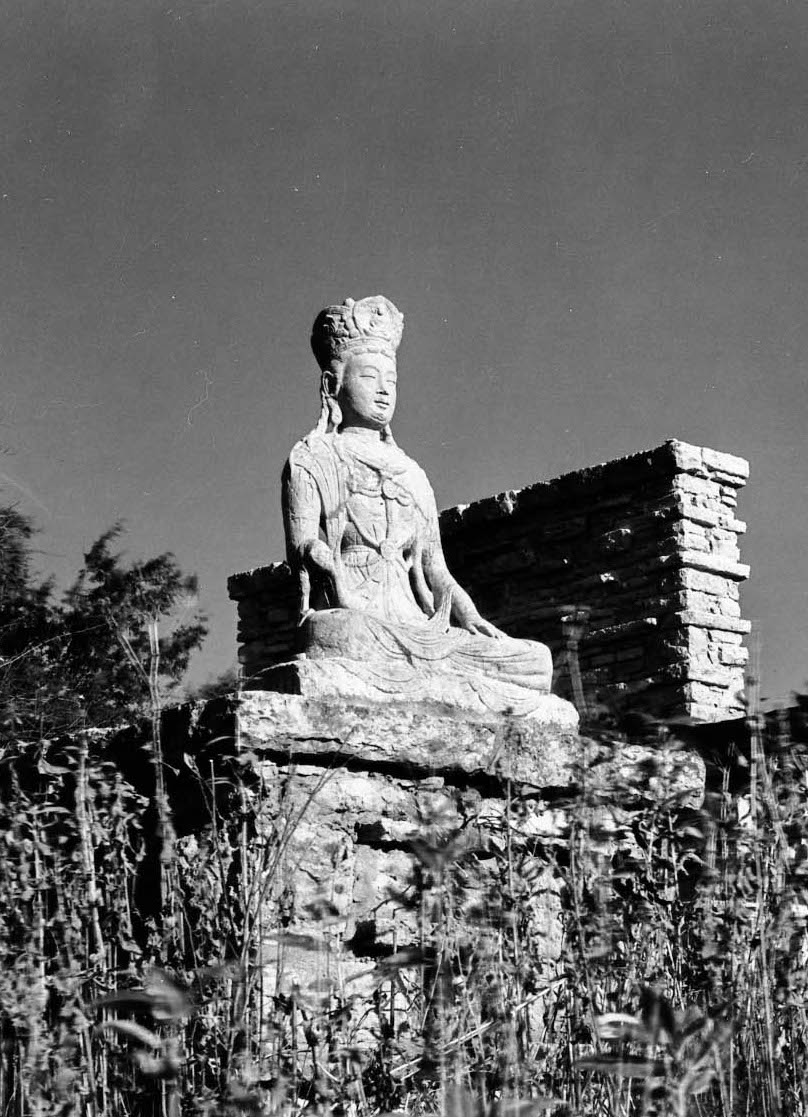
1. Seated stone Guan-yin on a wall outside the Hill Wing. Photograph from the late 1930s.
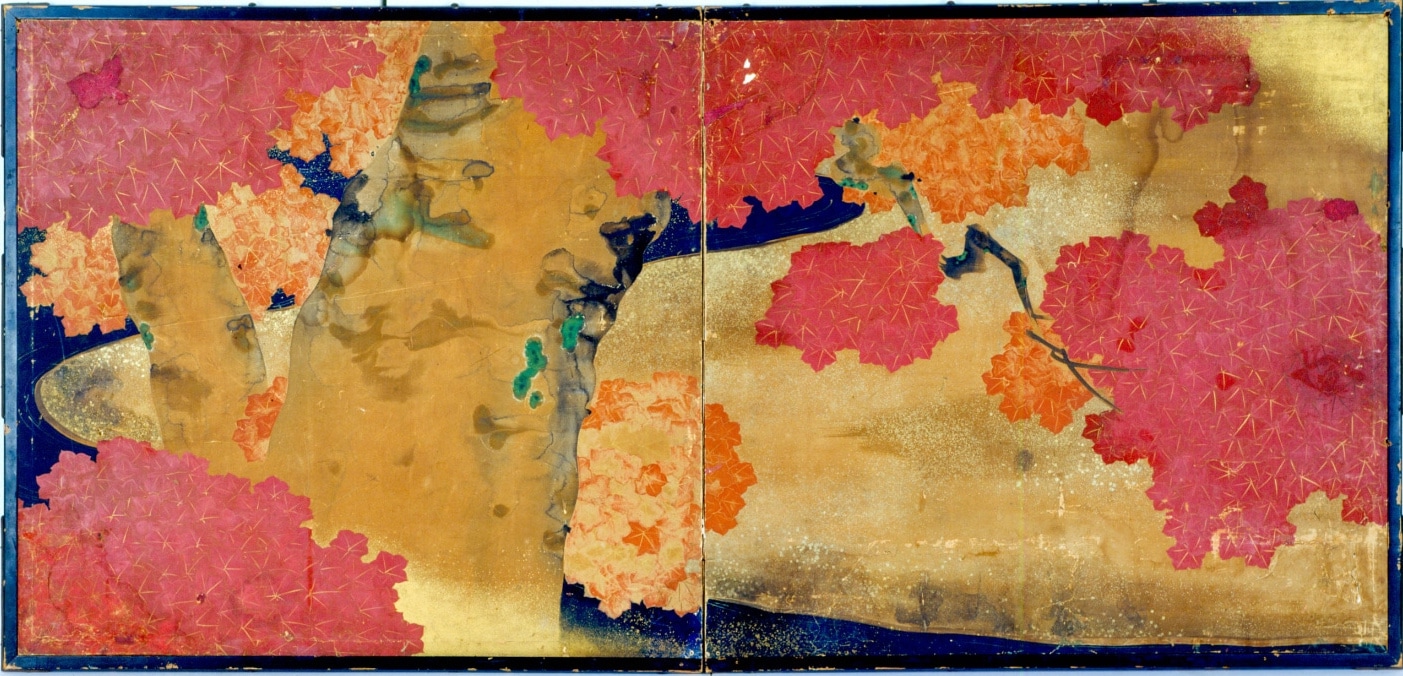
2. “Autumn and Winter,” two-sided two-panel screen, by Watanabe Nangaku (1767-1813), 18th century. The image on the top right shows the screen installed in the Taliesin Living Room, displaying its autumn side.
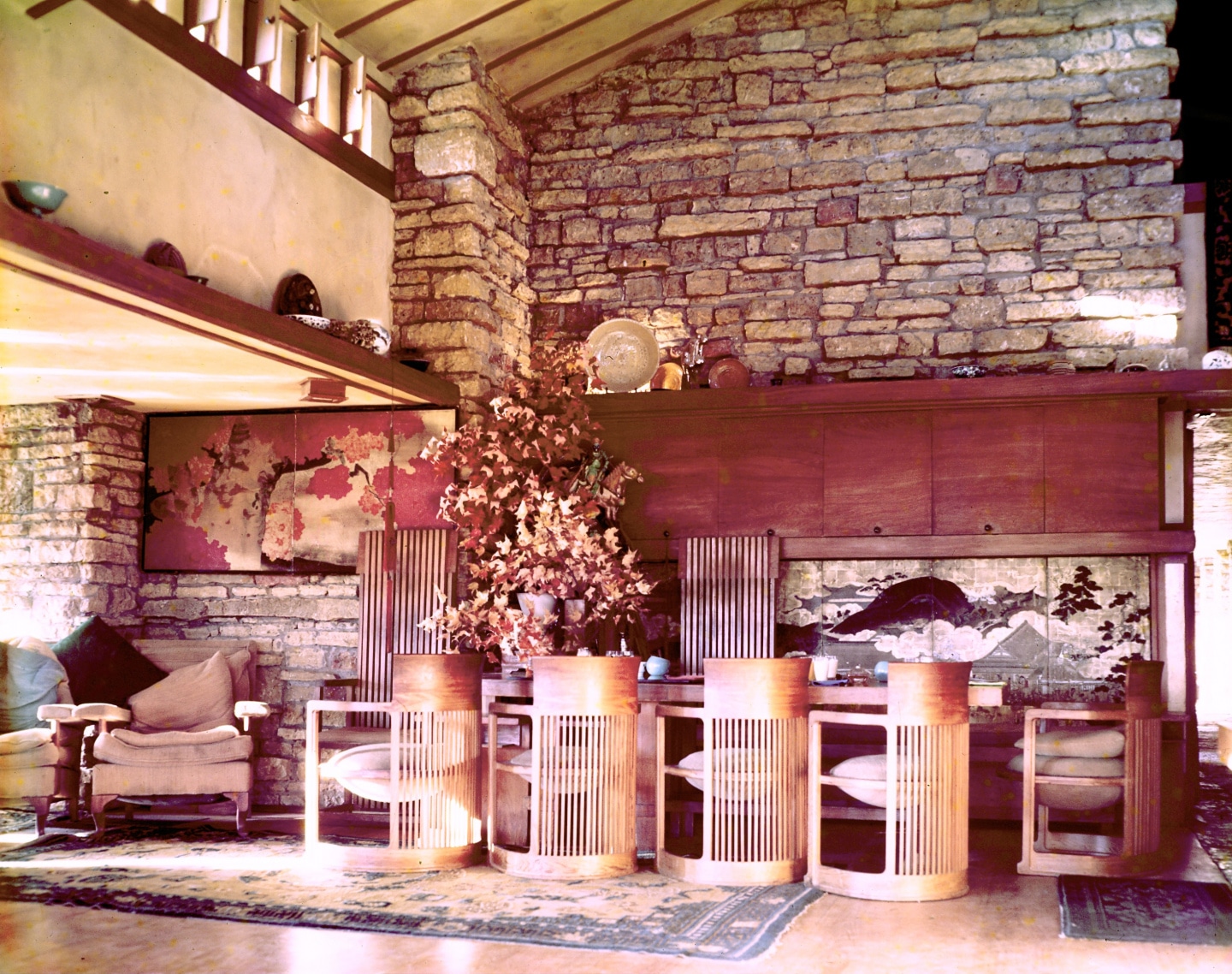
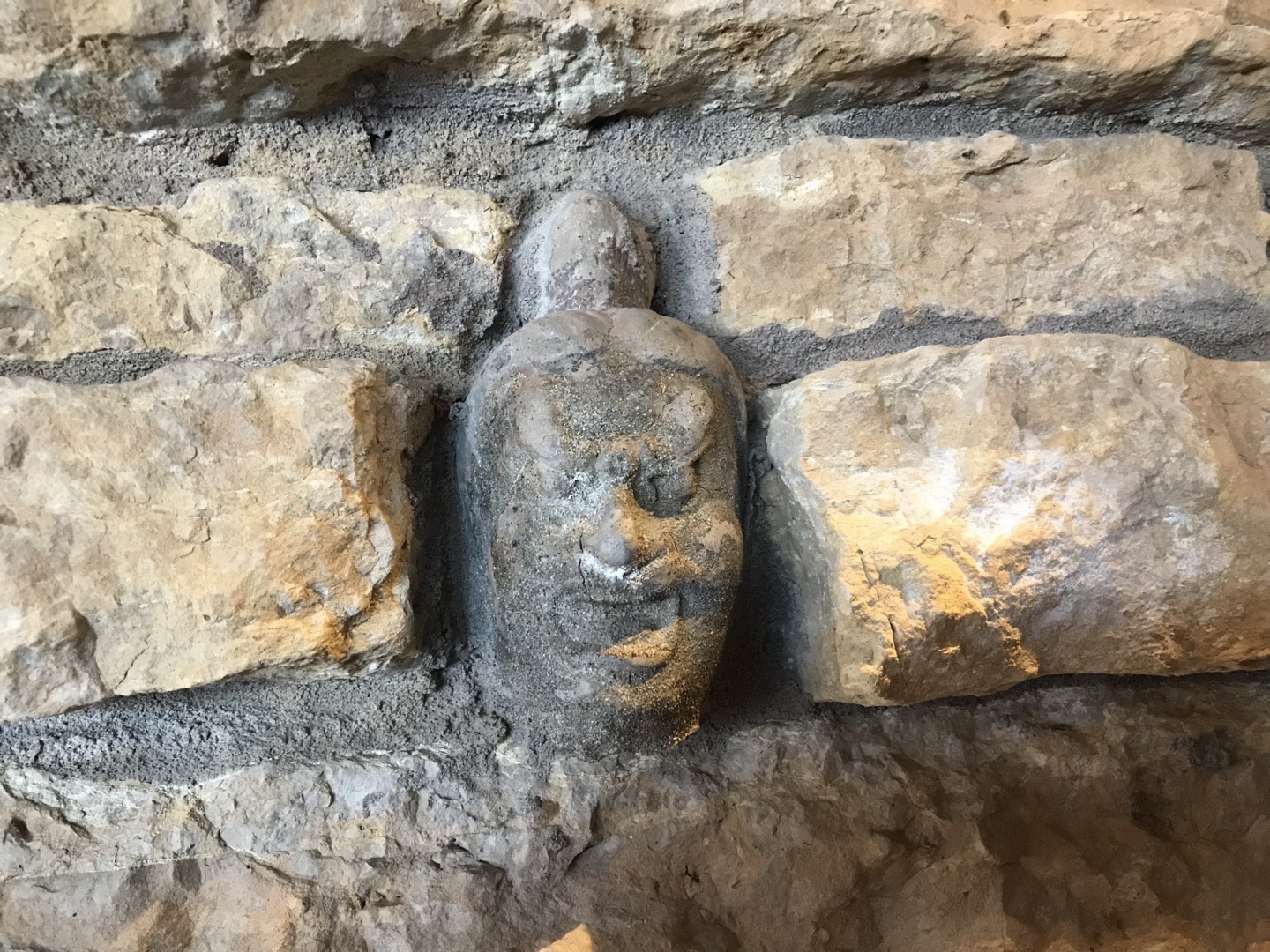
3. Wright salvaged pieces of Asian sculpture lost in the Taliesin II fire, including this Chinese warrior head, and built them into the masonry of Taliesin III. In his autobiography he wrote these “figures seemed to shed fraternal sense of kinship from their places in the stone…”
Through the balance and rhythmic play of its parts, Taliesin evolved into a living stage of harmony and beauty, upon which everyday rituals became events of importance, and awareness and enjoyment of daily life was enhanced.
Augmenting the amazing spaces were the decorative pieces Wright thoughtfully designed or selected. The furnishings and collections at Taliesin are an integral part of his vision for a unified home, studio, and community. Many of the furnishings he designed himself, or purchased and modified to better settle into the spaces. Remarkable pieces created from his designs, such as the sculpture Flower-in-a-Crannied Wall (9) and Hillside Theatre curtain (8), make enduring impressions.

4. “Pine Tree, Pheasant and Ducks,” Kano School, early 17th century. A photo from 1929 shows this screen in the same place it is today in the Taliesin Studio (pictured on the bottom left).
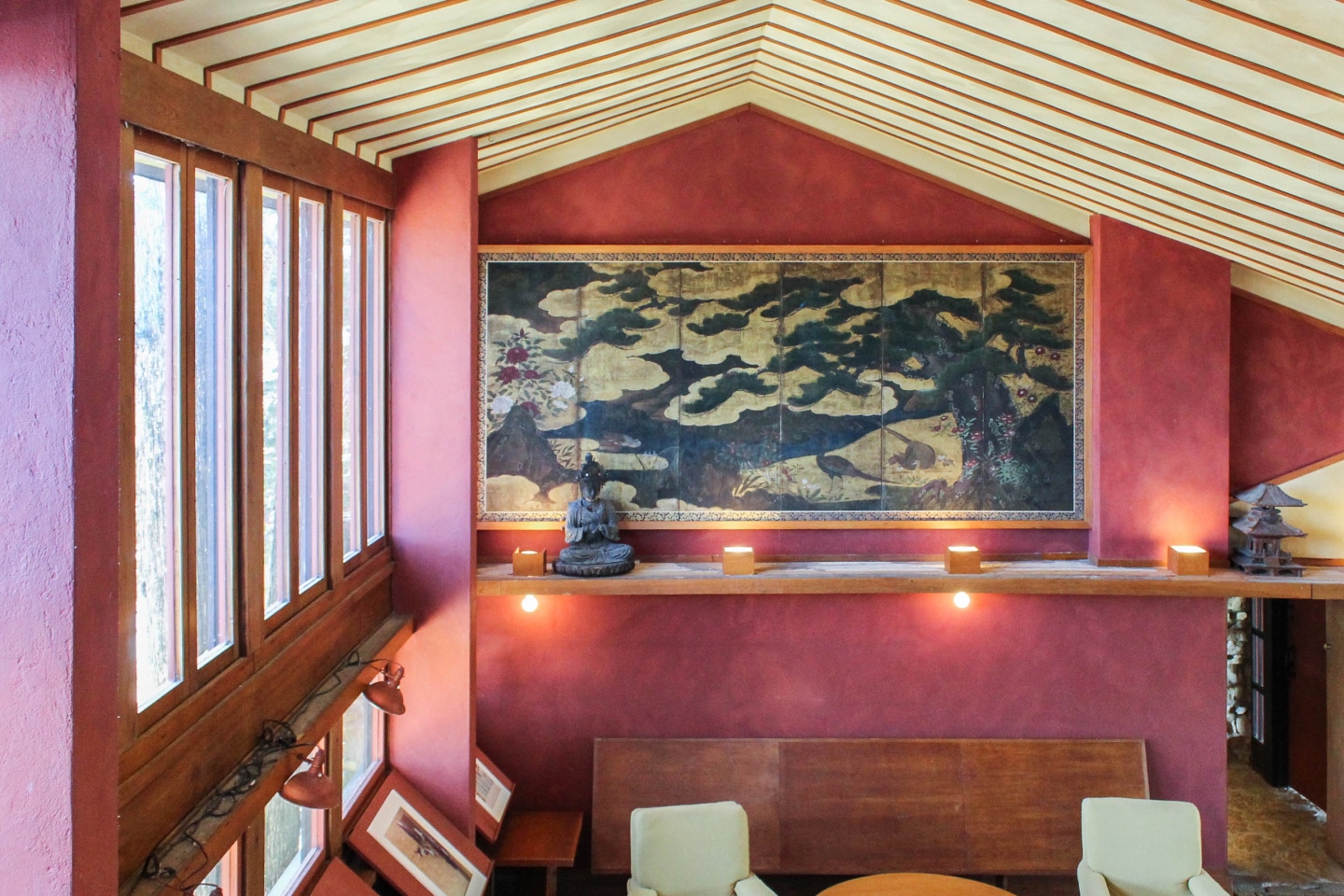
Other decorative accents offer some-thing more exotic. Early in his career, he had recognized in Asian art an aesthetic sympathetic to his own. He believed the sculpture, paintings, lacquerware, pottery, textiles, and rugs he collected had the quiet, the depth, and the sense of materials that his spaces required. He collected enthusiastically and generously, but tastefully displayed these pieces throughout the house, the adjacent studio, and even into the surrounding landscape, noting that “if the eye rested on some ornament it could be sure of worthy entertainment.” Ceramic and lacquer pieces were placed on available tables and shelves and Oriental rugs, in a wide array of patterns, were placed on floors and draped over tables and ledges. Traditional Japanese screens (2)(4) painted in bold color on gold leaf were placed throughout the house on walls and ledges; and richly colored, brocaded textiles were used as curtained hangings and lampshades, or draped across the piano or tables. An array of Buddhist sculptures (1)(6) found refuge on multiple ledges.
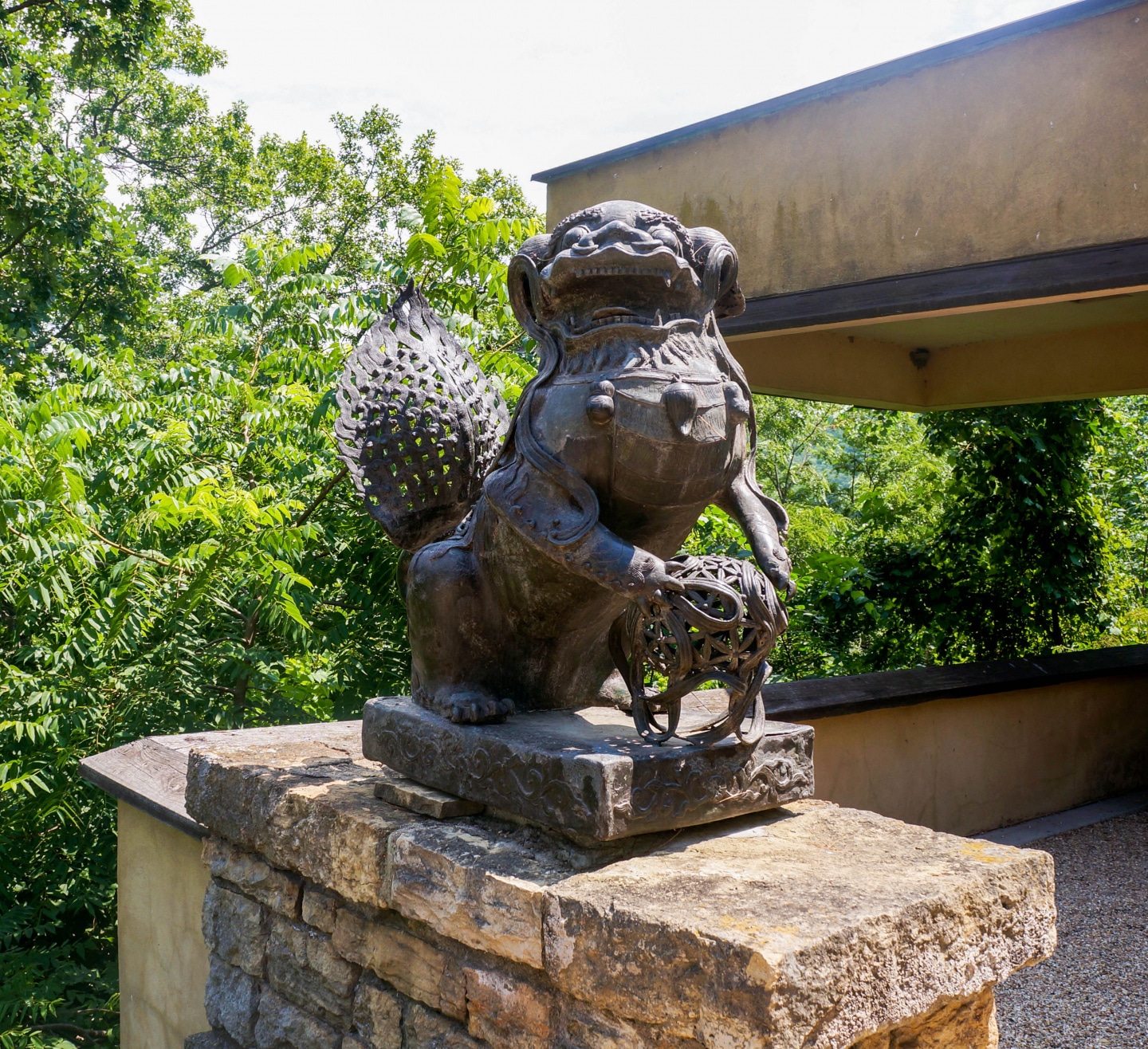
5. Fu Lions traditionally guarded the entry to Buddhist temples in China and Japan, warding off evil and protecting the sacred precincts, and Wright may well have intended them as guardians when he placed them at the entry of Taliesin. It is not known when they were purchased, but Chinese newspapers found within the pieces during conservation suggest a post-1940 date. This is the male of the bronze pair.
6. Detail of the Guan-yin Wright placed in the Living Room of Taliesin III at an early date. The softly curving lines of this bodhisattva cast an added sense of serenity to one of Wright’s most magical spaces.


7. “Figures in a Mountain Landscape,” in the Style of Tang Yin, early 17th century, ink on silk. Wright must have appreciated the tranquil mood depicted in this large Chinese scroll, because he installed as a permanent fixture in the Blue Loggia of Taliesin III. Historic photos show it in place by at least the mid-1930s. Conserved in 2004, it remains one of the defining decorative features of the Taliesin interiors.

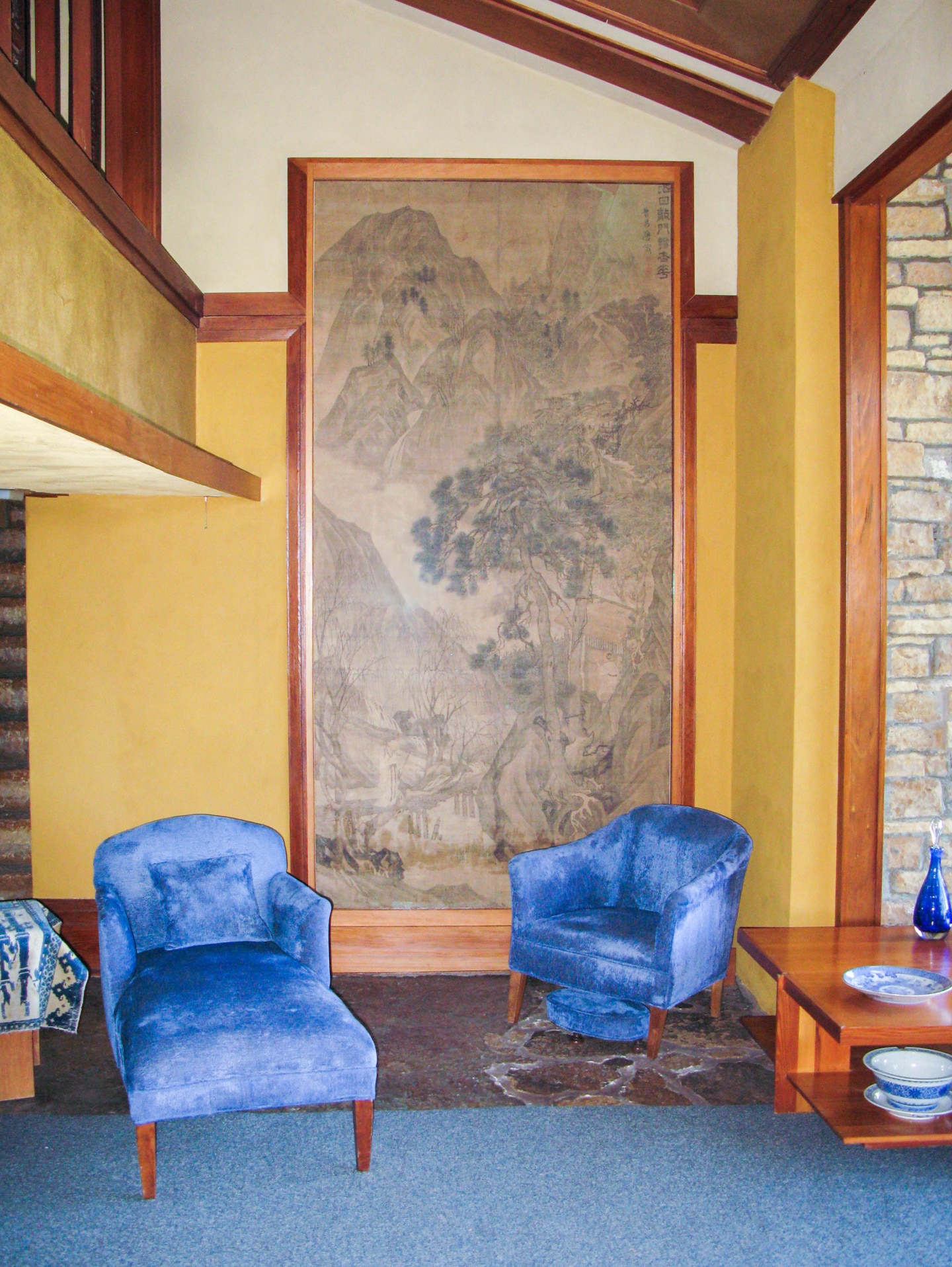
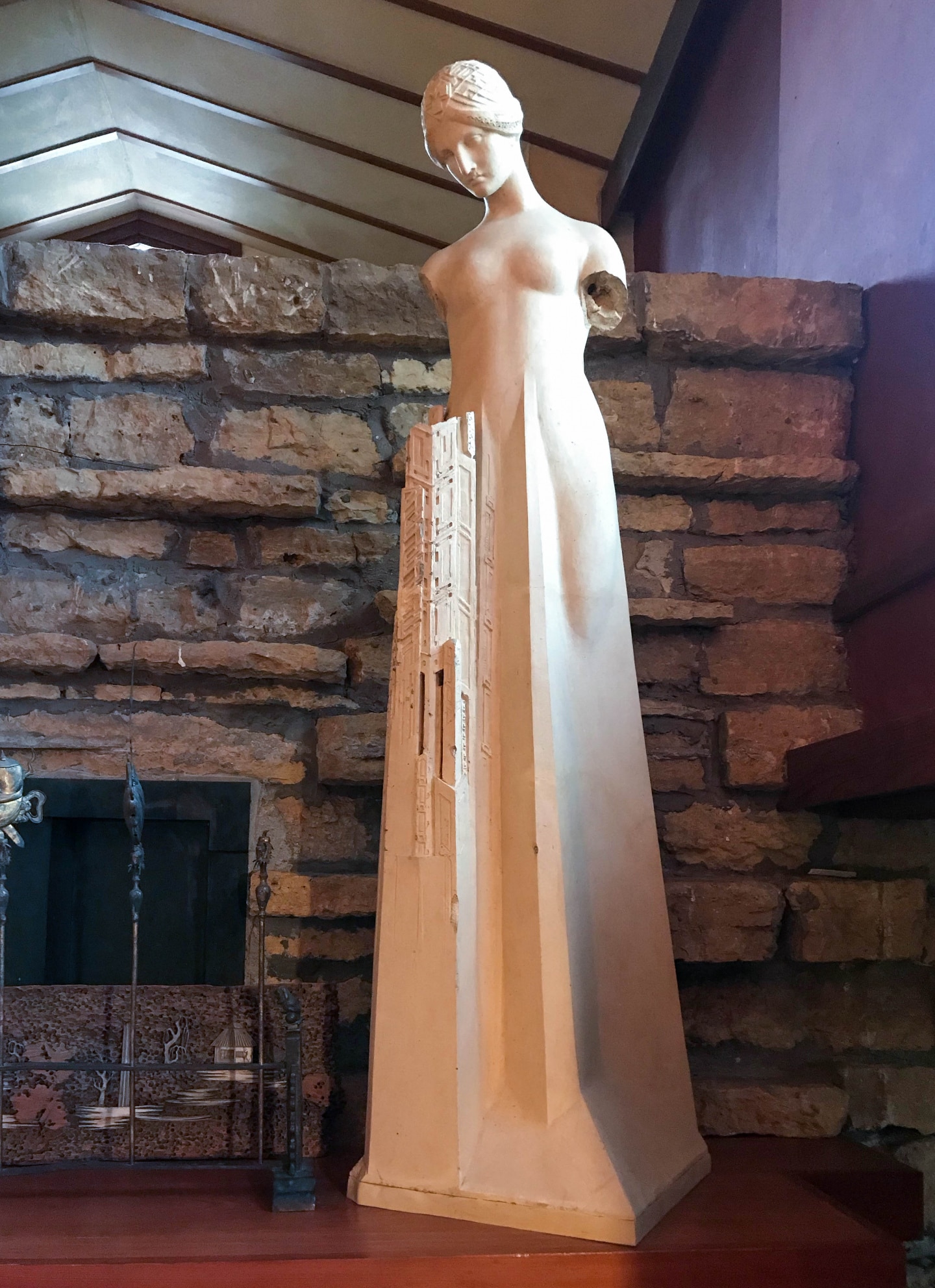
9. The Flower-in-the-Crannied Wall sculpture is a stoneware copy of a piece Wright had designed for the Susan Lawrence Dana house in 1902. He apparently liked it so well he placed it in various locations throughout the Taliesin estate over the following decades. Badly damaged from this exposure, the piece was conserved in 2014 and a reproduction made through a fascinating 3D printing process. The original (above) now stands in the Taliesin Studio and the reproduction just outside in the garden. The title comes from the Alfred Lord Tennyson poem carved on the back of the piece.
Some pieces, like the iron Quan-yin (6) that stands as sentinel at the entry to the Living Room, and the large Chinese scroll mounted in the Blue Loggia (7) were permanently placed, and over the years helped to define the spirit of these spaces. There were also fragments of marble, black basalt, clay, and porcelain—remnants of pieces lost in the Taliesin II fire—that Wright melded into the masonry of Taliesin III (3). Stone and metal figures kept watch from the gardens, and a pair of Chinese Fu Lions (5) guarded the entry drive. Embracing these pieces and their roles at Taliesin, Wright wrote: “Hovering over these messengers to Taliesin from other civilizations and thousands of years ago, must have been spirits of peace and good-will. Their figures seemed to shed fraternal sense of kinship from their places in the stone or from the broad ledges where they rested.”
Taliesin is Wright’s “shining brow” on the hill, but Taliesin was also a legendary “Welsh poet, a druid bard who sang to Wales the glories of fine art.” The appropriateness of this storyteller’s name to Wright’s home can hardly be lost on any visitors to Taliesin, where Wright himself was the poet who summoned the buildings and landscapes, furniture, and fine art into being as sublimely articulate expressions of great beauty. It is the unity and serenity of Taliesin, the seamless weaving of countless elements into an integrated and aesthetically harmonious whole, that makes this perhaps his most inspired and eloquent spatial expression. Thus, as Louis Sullivan so eloquently wrote, does a “master mind work to bring forth out of the fabric of a dream, a fabric of enduring reality.”
This article originally appeared in the summer 2018 issue of the Frank Lloyd Wright Quarterly magazine, “Taliesin: The Shining Brow”

8. Hillside Theatre Curtain executed by the Taliesin Fellowship in 1952 for Wright’s birthday. Wright created the design to portray the rural landscape of the Wyoming Valley with Taliesin overlooking the Wisconsin River as it flows past the barns and fields of the area.

ABOUT THE AUTHOR
Margo Stipe is the Director and Curator of Collections at the Frank Lloyd Wright Foundation.


